In this day and age, customers are bombarded with a lot of different products wherever they turn.
Online advertisements, billboards, commercials, you name it. Researchers say that the average person sees approximately 4000 to 10 000 ads per day.
Let’s do a little math. Let’s say that the average person is awake for 16 hours per day. That would mean that that person sees at least 250 ads each hour. In this advertisement jungle, what are the chances people will notice and remember your brand?
? Read Brand Reputation 101: Monitoring, Analysis, and Management Tools
The key is on focusing on getting to know your customers and work on establishing a relationship with them.
As Jon Simpson put it in a Forbes article:
“When your brand resonates with your intended audience through your market research and intensive strategy and messaging, the struggle to build awareness and trust around your name decreases as your brand becomes more relatable.”
One useful tool to use while doing the research is media monitoring.
With media monitoring, you can gather a myriad of valuable information that will help you get to know your customers better and build brand awareness. Determ, for example, tracks over 100 million online sources and delivers the ones that are relevant to you.
How does it work, you ask?
Let’s start!
First of all, you need to set up queries that you find relevant to your brand. After you do that, all the mentions will show on your feed (pictured below).
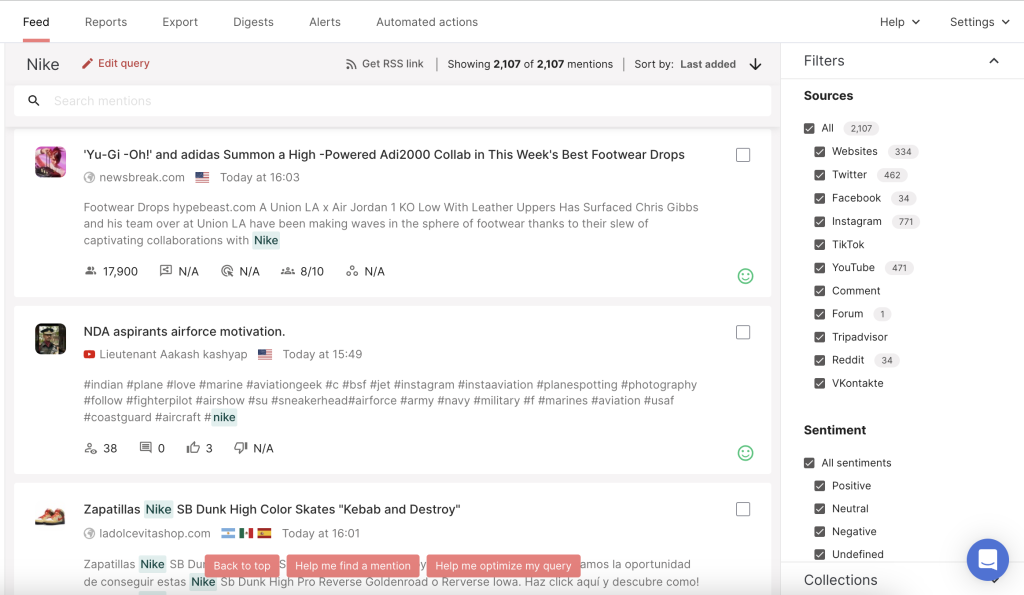
Here you can track all the sources that your brand has been mentioned on and see who is saying what about your brand (even if they didn’t tag you in the post).
To get a bigger picture of your online brand perception, Determ’s reports will come quite handy. In the reports, you can see data such as the number of mentions over time, sentiment analysis, top influencers, top performing channels, etc. All the things mentioned can help you build a long-term strategy that will produce great results in the end.
Let’s go through the Determ’s advanced report segments and analyze how can each segment make your journey of improving brand awareness shorter and more productive.
MENTIONS
There are a couple of segments in the report revolving around mentions. The number of mentions, mentions over time and mentions over time by source.
Number of mentions
You can look at this segment as the first step – are people talking about your brand? If the number is high, logically they are. This is usually a sign that people are aware of your brand and that you’re on the right path. But, the number of mentions doesn’t always mean a good thing. If you’re in the middle of a crisis, you might not want to see a high number of mentions, because the chances are most of them will be negative. Reviewing your mentions can provide you with a lot of valuable insights. You can see what your customers want and expect from you and your products or services and implement that in your business model.
Mentions over time

This shows you your mentions over the current period and the previous one. You can use this information to asses whether you’re making progress over time. If you see that the number of mentions has dropped, you should reassess your marketing efforts and work on re-engaging your audience.
Mentions over time by source
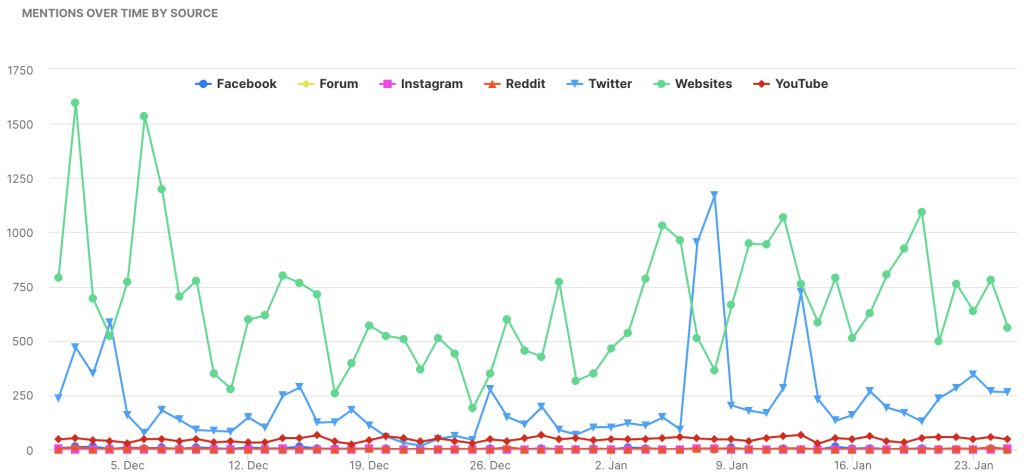
This timeline shows you on which channels people have been talking about you the most. This information comes in handy to detect channels your (potential) customers are the most active on and direct your messaging to them on those channels. There is no point in posting tons of content on Twitter if you’re customers are not on it and won’t see it and engage with it, right?
SENTIMENT
This segment is probably the most interesting. Here you can track whether people are responding positively or negatively to your products, marketing efforts, etc.
We’ve automatized the process even more by introducing the new Automated Actions feature which allows you to preset the sentiment of mentions containing certain keywords. With this feature you won’t have to manually change the sentiment of your mentions anymore.
Positive-negative sentiment ratio and sentiment ratio
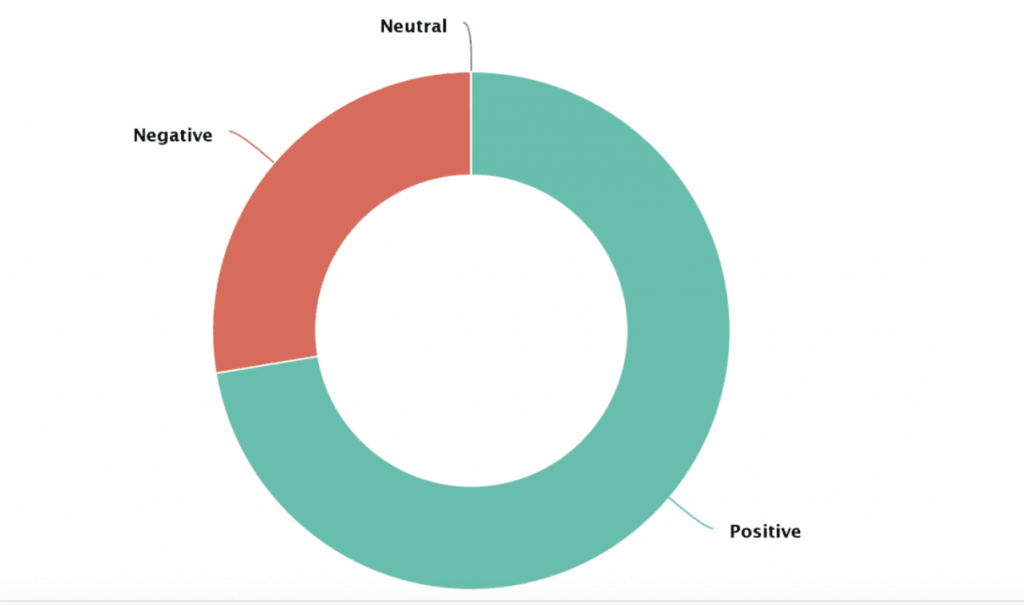
Here you can see your overall sentiment standing. The greener, the better! If you want it to predominately green, click on the negative mentions and see if you can identify the reason for negative sentiment.
For example, if you see a customer complaining about your product or service, engage in a conversation and try to fix the problem. The customer will feel appreciated and heard, and others may see that you care about your customer and check out what you’re offering.
Sentiment over time
Here’s where you can see the progress that you’re making. If the sentiment was positive at the beginning of the period and ends up going negative later on, it means you’re doing something wrong and vice versa. You may want to revise the marketing efforts that were in place over time and eliminate the ones that were clearly not resonating with your customers. Also, if the sentiment becomes more positive over time, keep up the good work!
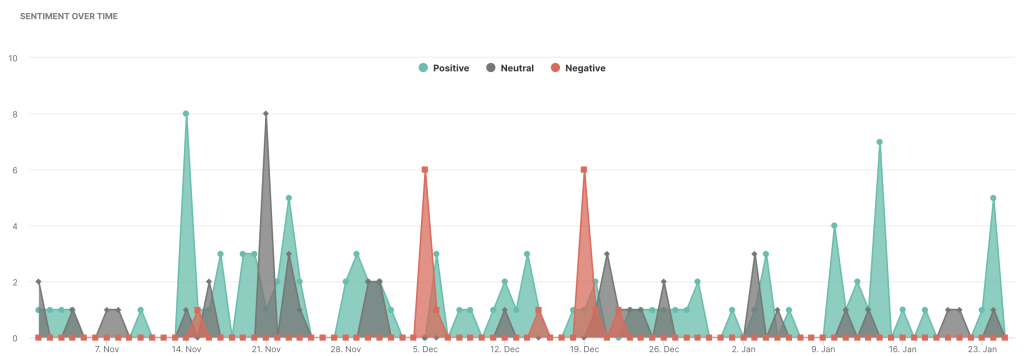
Sentiment ratio by channel
Here you can see your performance on different online channels. You can detect what type of content works for a specific channel and adjust the approach. If a channel has predominately negative sentiment, pay closer attention to it and direct more efforts to it – different content, better communication with customers, etc.
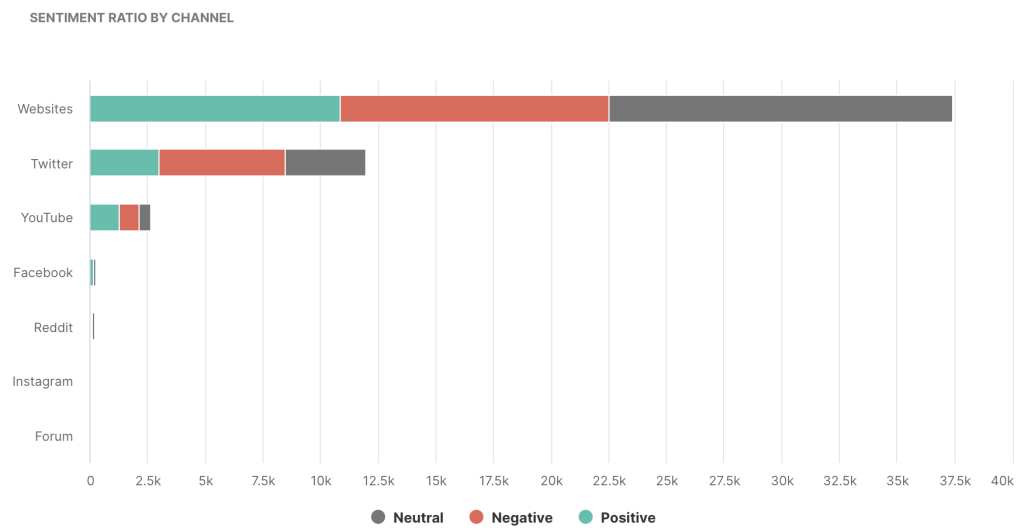
INFLUENCERS
Influencers became extremely relevant and profitable for companies in the last couple of years. The part of advertising that was reserved only for celebrities such as actors and musicians before is now given in part to influencers who became celebrities in their own right. Determ’s reports will provide you with the list of influencers who are mentioning your brand.
Top influencers by number of mentions and Top influencers by source

The first one, Top influencers by a number shows you people who are mentioning you the most online. Top influencers by sentiment show you in what context. As you can see from the picture above, a large number of mentions from one person can go both ways. For example, some of the top influencers with the highest number of mentions ended up having negative sentiment toward your brand. This is another great opportunity to engage with people and see if there’s a way to solve the issue.
Top influencers by reach and Top influencers by source
Here’s where you can find influencers that are mentioning your brand and whos post have the biggest reach. Snoop through the list and find the ones that would be the best fit for your brand and ask them if they want to collaborate. By collaborating with them you can reach their audiences which will largely improve your brand awareness.
LOCATION AND LANGUAGES
Reports provide you with the top 10 locations where your brand has been mentioned and top 10 languages used.
Location
This data show you on what markets your product is being mentioned. This is a great thing if you just penetrated a new market and you want to check if your product or service is getting noticed. Also, it is great if you wish to expand to a new market and want to see whether there is an interest in what you’re offering.
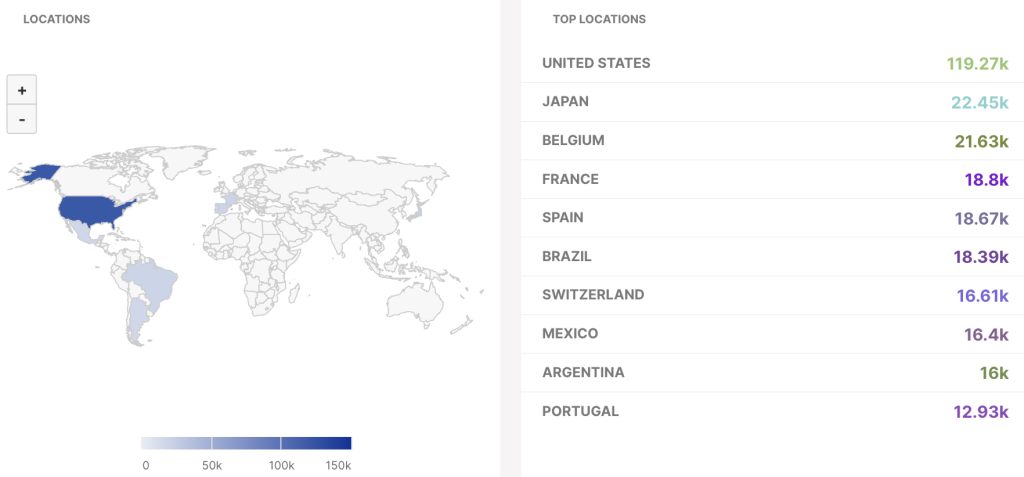
This data show you on what markets your product is being mentioned. This is a great thing if you just penetrated a new market and you want to check if your product or service is getting noticed. Also, it is great if you wish to expand to a new market and want to see whether there is an interest in what you’re offering.
Languages
Determ monitors mentions in all languages, so you’re not restricted only to English (P. S. we even monitor Klingon). This way you can see what people are saying about you around the world and even engage with them in their own language. They would surely appreciate it but make sure that you have an employee that speaks the language. We don’t recommend Google Translate for this type of situation.
WORD CLOUD
Word Cloud is a fun and useful feature that lets you know what other terms are used in connection with your brand. Use Word Cloud to see in which context is your company mentioned online. Also, it’s great for inspiration for content creation. And with creating relevant content, you’re on the right path to improve brand awareness.
Read How Determ’s Word Cloud Helps You Find Brand Information
To sum up
Good research and strategy will help you with improving your brand awareness. By implementing media monitoring into your research activities, you’ll be able to save time and money. That way you can invest those extra resources in something else. You’ll receive a valuable insight that will help you build better and stronger strategies that will benefit you in the long run.
Want to give it a try? Book a call with one of our experts.



